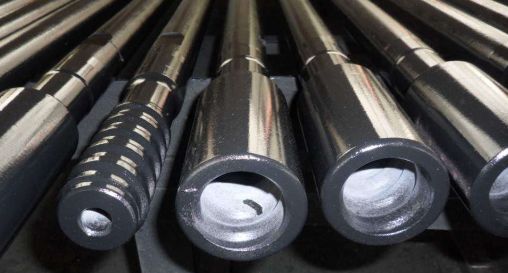How to minimize the wear of drill rods and drill tools
How to minimize the wear of drill rods and drill tools during transportation and drilling rig handling, the following are three important prerequisites for safe handling and transportation of drilling equipment.
1. Drill rod handling
Proper handling of drill rods should pay special attention to threaded connections to avoid damaging the threads. All drill rods, drill collars, swivel joints, components and other drilling equipment must be sent out with suitable thread protectors, and the threads should also be properly cleaned and lubricated, and the thread protectors should be properly installed, preferably steel protectors, not plastic protectors.
2. New connections
New drill rod strings require special attention, and the connection must be broken according to the manufacturer's procedures, chemical torque and fracture inspection should be properly applied, threads should be cleaned, and torque should be supplemented.
3. Correct composition of drilling equipment
The third important factor is the correct composition of drilling equipment during rig operation. The threads should be properly cleaned and the appropriate amount of paint should be applied, mainly for sealing shoulders. Visual inspection must be carried out and worn or damaged parts should be replaced. When engaging the threads, it should be done under control, if the pin falls on the box shoulder by pushing the single and double brackets, it will not be impacted, and the correct torque required for the thread form should be applied.
When using iron, the torque punch should be stationary and torque should be applied after the cycle is completed. When checking the torque meter, once it reaches the preset value, it means that the work has been completed. If it is still moving, it means that the full torque has not been applied.
When using manual pliers, place the pliers on the thin wall part of the box, making sure that no pliers pass through the connection. When torque is applied to the connection, the makeup pliers and separation pliers should be 90 degrees to each other. If the angle is less than or greater than 90 degrees, no torque will be applied. When using hydraulic equipment, the operating system should be fully calibrated. When using manual pliers, the torque sensor must be filled with hydraulic oil.





